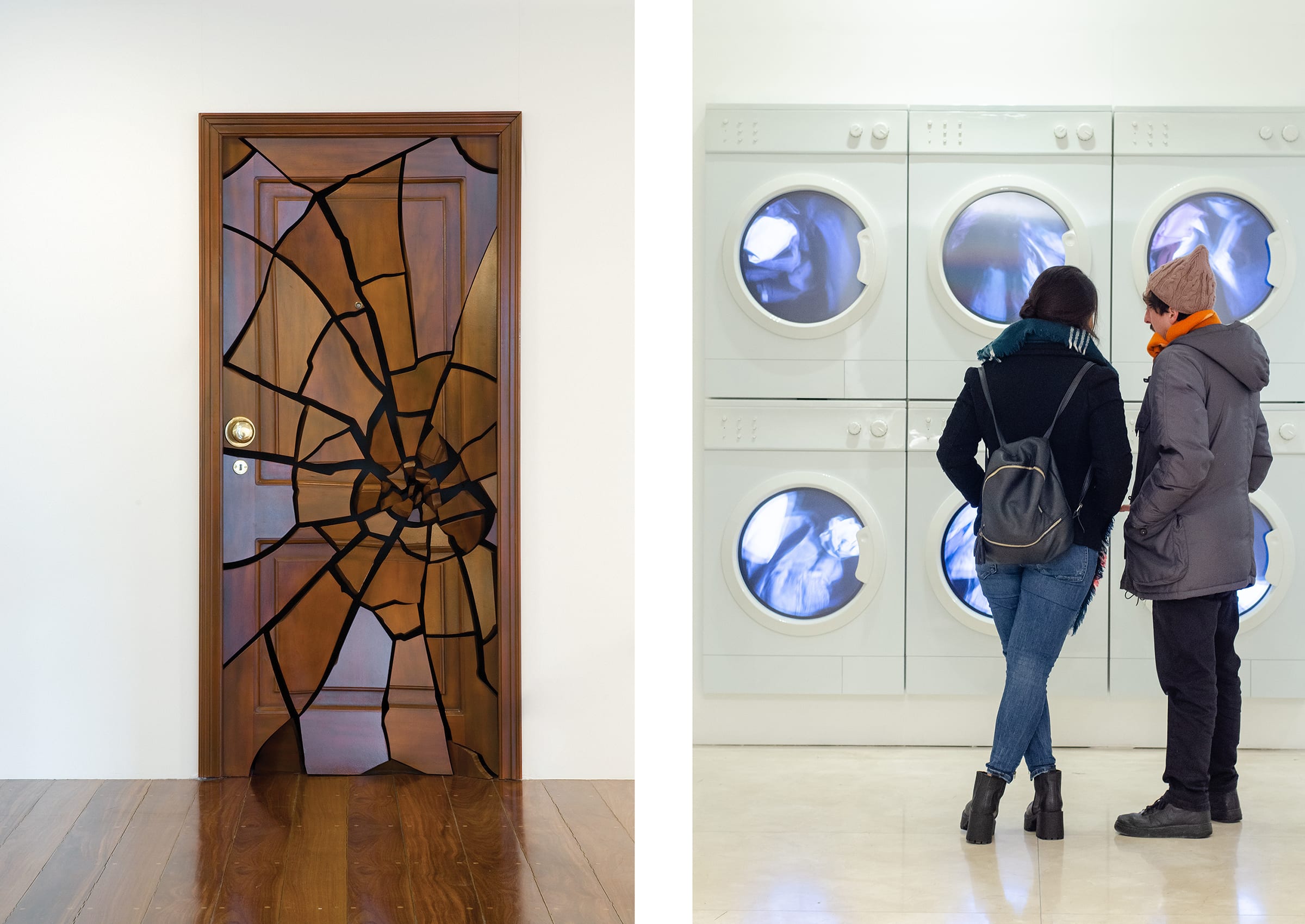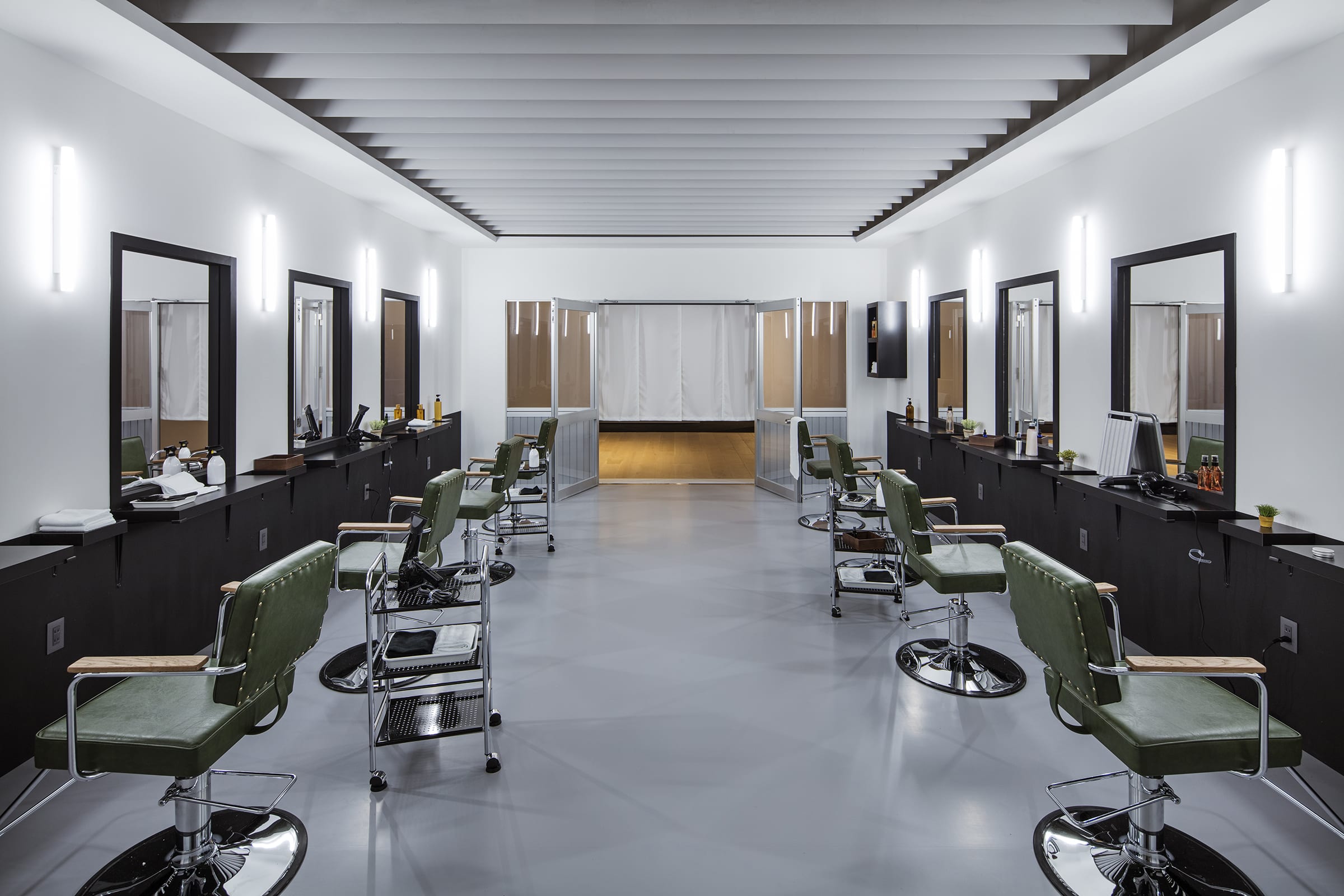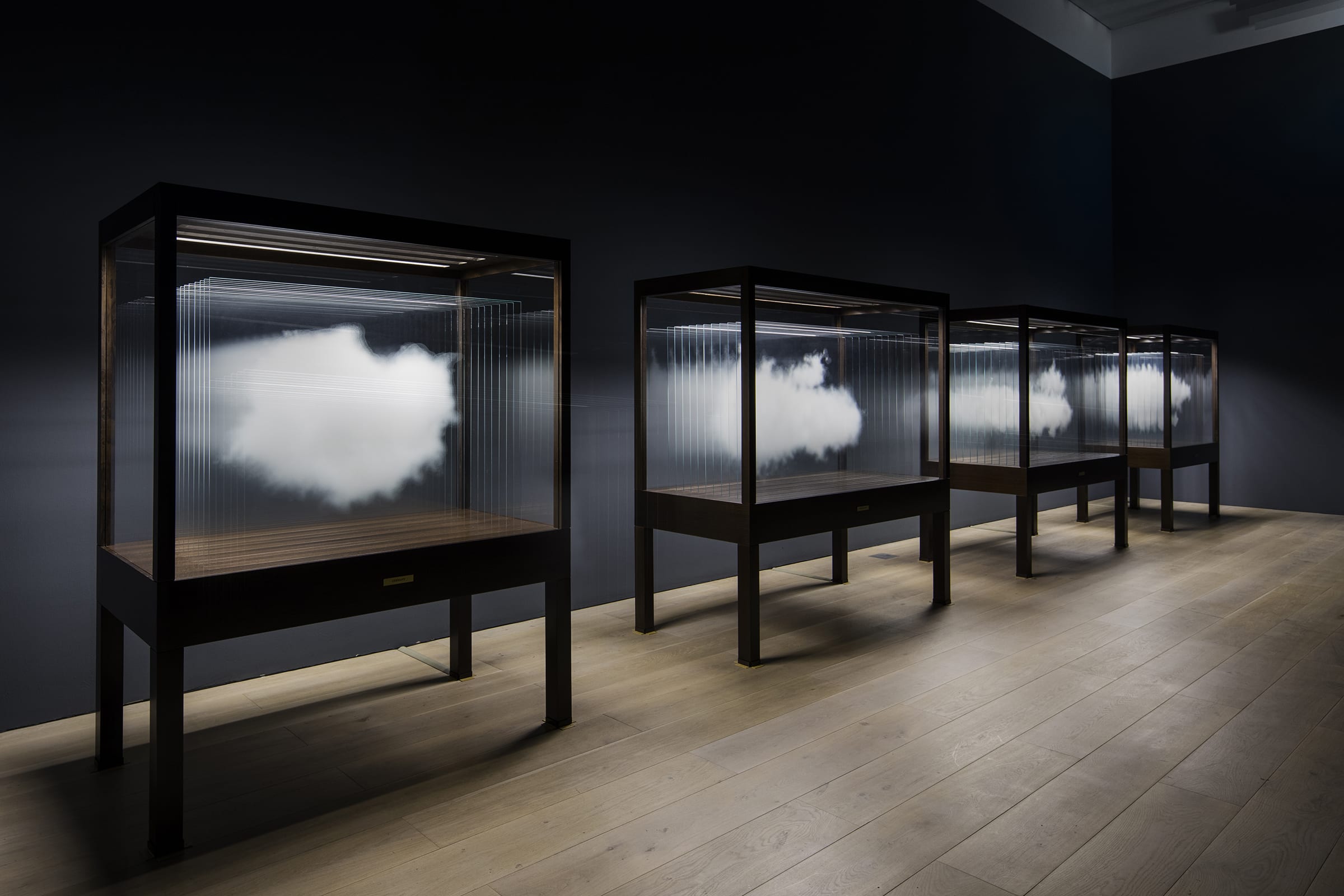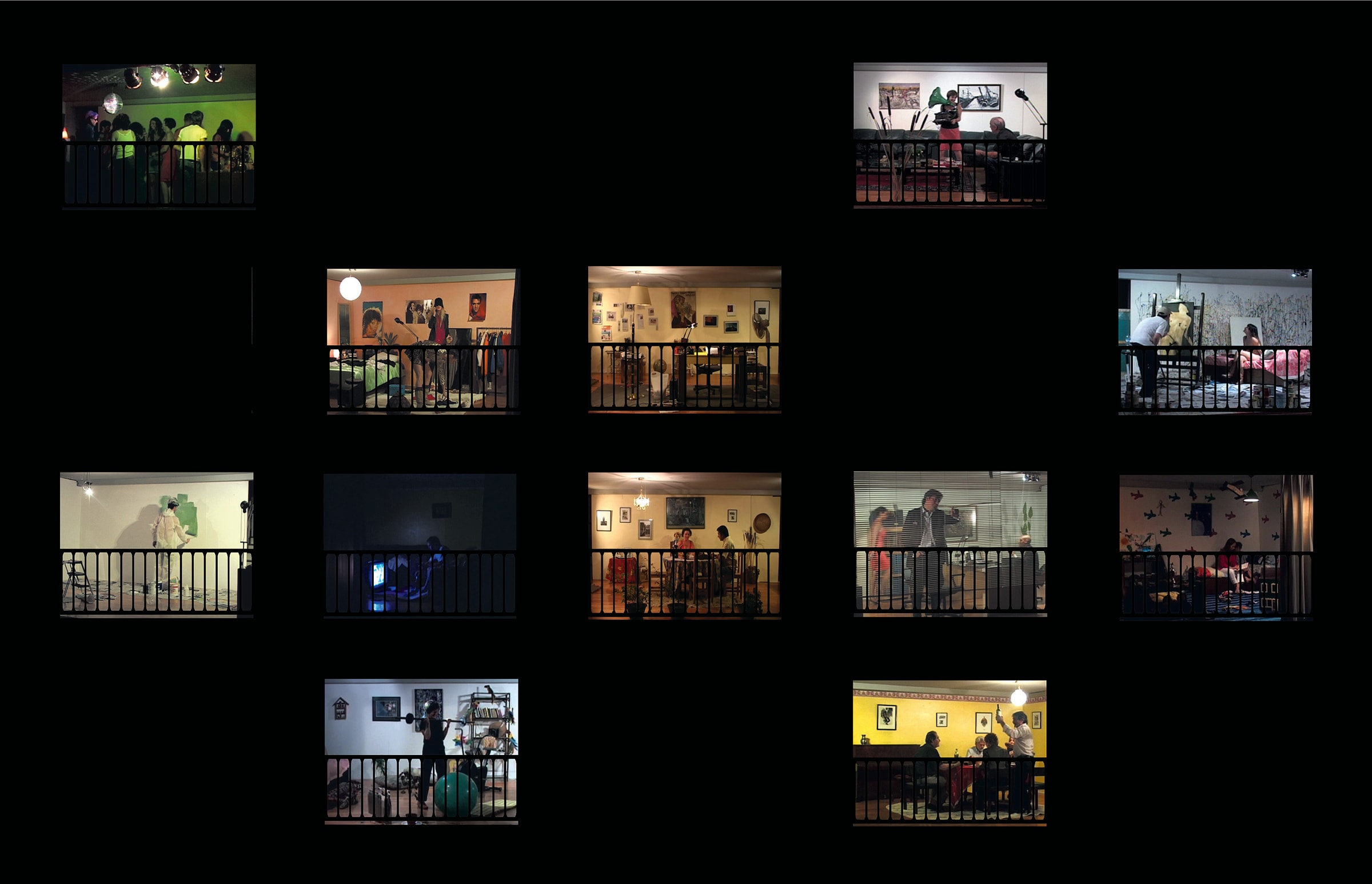It’s hard to know where an artist gets the drive and confidence to go big. But Argentine artist Leandro Erlich seems to have had that instinct from the beginning, creating in 1999, at just 26 years old, a full-size swimming pool – complete with deck and ladder – which anchored the Argentina Pavilion at the 2001 Venice Biennale and was later installed at MoMA PS1 in 2008.
That boldness has continued to mark Erlich’s body of work. It was evident in his off-kilter replica of a late-19th century Victorian terraced house, commissioned by the Barbican Gallery in London in 2013, in which visitors could seem to hang out the windows and climb the walls by way of an illusion created with mirrors. It was there in his ‘Port of Reflections’, first exhibited at the Neuberger Museum of Art, in Purchase, N.Y., in 2017, where colorful rowboats appeared to rock gently on shimmering dark water. And it will be there in Miami, when Pérez Art Museum Miami (PAMM) presents for the first time in North America a monographic exhibition of Erlich’s work.


The show at PAMM, ‘Leandro Erlich: Liminal’, features 16 works spanning more than two decades of the artist’s practice. ‘Each encounter that you have is passing itself off as an encounter that’s part of your everyday life,’ says Dan Cameron, the visiting curator who organized the show. ‘Everything has got this appearance of being something recognizable, that’s familiar to you, and the closer you get to it your perceptual connection to it breaks down.’
In a telephone interview from his home in Argentina, Erlich said it is that questioning of perception that has fueled so much of his work. ‘The ordinary is a main source of inspiration, but I’m not someone who is interested in painting the ordinary,’ Erlich said. ‘I’m someone who is interested in looking into the ordinary as a way to question our conception of – or understanding of – reality.’
To be sure, Erlich’s source material may initially appear quotidian – a subway, a sidewalk, a beauty salon – since the artist recreates these spaces at a human scale and with realistic clarity. The twist comes when people interact with the installations and realize all is not as it seems. This sleight of hand is not meant to play tricks on the viewer, but rather to upend perceptions, notions of what is real.
‘The miracle of the work is how it can be so accessible and complex,’ says Franklin Sirmans, PAMM’s director. ‘Few artists possess his talent for making the seemingly obvious or easy into an experience of beauty everyone can relate to. And obviously it’s a little bit of surrealism.
Erlich said it is particularly meaningful to him to be exhibiting during Art Basel Miami Beach because he has been part of that fair since its earliest days, and because ‘Miami is the port of entrance for a lot of Latin American culture,’ he said.

Sirmans first encountered Erlich’s work at the Whitney Biennial in 2000, where the artist’s installation featured rain, thunder, and lightning between windows in a narrow alley. Saying Erlich’s piece in the biennial brought Robert Gober to mind, Michael Kimmelman in The New York Times called Erlich ‘one of the show’s surprises’. Sirmans was then particularly struck by Erlich’s piece for Prospect New Orleans in 2008: a ladder leading to a window suspended in space, which referenced Hurricane Katrina. ‘It’s a window that has come off of the house,’ Sirmans says. ‘It’s almost as if you’re looking through the window at a structure that no longer exists.’
Cameron, who is also the founding executive director and artistic director of Prospect, says he was deeply affected by Erlich’s work Window with Ladder – Too Late for Help., which was ultimately acquired by the New Orleans Museum of Art. ‘It was so visceral and so raw and I thought, “Are people going to accept this? Is this going to be a problem?”’ he says. ‘In the end, it turned out to be one of the most popular pieces in the show. It functions as a sort of de facto Katrina memorial for New Orleans. … It gave visual, tactile presence to a terrifying situation, which is you’re trying to get up the stairs to the window but the house that the window is attached to is gone,’ Cameron continues. ‘Or you’re trying to escape the window but it’s too late because the house has collapsed behind you. No matter which way you look at it, the image is one of futility.’


Getting to know Erlich’s work over the years, Cameron has long wanted to mount a survey of the artist, an opportunity PAMM has finally afforded him. The show will take over the entire museum. ‘He’s redefined the idea of the installation as something which is inherently disorienting, that upends how people perceptually locate themselves in a space,’ the curator says. ‘He tries every possible method of developing this illusion where you think you’re looking at something, but it turns out you’re looking at something completely different or that you’re trying to figure out what it is you’re looking at and it just keeps getting more and more elusive.’
Born in 1973 in Buenos Aires, with many relatives in the field of architecture, Erlich always wanted to be an artist. ‘As a child I had many fantasies,’ he said. ‘Art allowed me to be myself and to explore with freedom the imaginary I have in my mind.’ Between 1998 and 1999 he took part in the Core Program, an artist-in-residence program in Houston, then spent several years in New York and Paris before settling back in Buenos Aires. In 2016, Erlich with The Democracy of the Symbol created the illusion that the city’s obelisk had been cut off, with a full-scale reproduction of the top placed on the esplanade of the Museo de Arte Latinoamericano de Buenos Aires (MALBA), with visitors able to go inside.
‘This reinvention of things we already know allows us to think about how we relate to the world that exists,’ he said. ‘This is the way I like to question the system.’
His solo exhibition at the Mori Art Museum in Tokyo in 2017 – ‘Leandro Erlich: Seeing and Believing’ – featured his 2008 installation Changing Rooms, a row of department store changing rooms furnished with full-length mirrors, stools, and curtains, and his 2004 piece Building, a full-size photograph of a building facade on the gallery floor, with a mirror angled above that made spectators look as if they were climbing the row house.
‘The message is fantasy and being able to get away from the reality of the everyday,’ Sirmans says, ‘that we can find magic in things.’
This article was originally commissioned for the Art Basel Miami Beach magazine 2022.
Robin Pogrebin has been a reporter for The New York Times since 1995, where she covers cultural institutions, the artworld, architecture, and other subjects.
Recommandé :
Captions for full-bleed images: 1. Leandro Erlich poses inside his installation Batiment, 2022, in Paris. Photo by Marc Piasecki/Getty Images. 2. Leandro Erlich, The Room, 2006–18. Installation view at Mori Art Museum, Tokyo, 2017. Courtesy of Mori Art Museum. Photo by Hasegawa Kenta. 3. Leandro Erlich, The View, 1997. Installation view at Mori Art Museum, Tokyo, 2017. Courtesy of Mori Art Museum. Photo by Hasegawa Kenta.